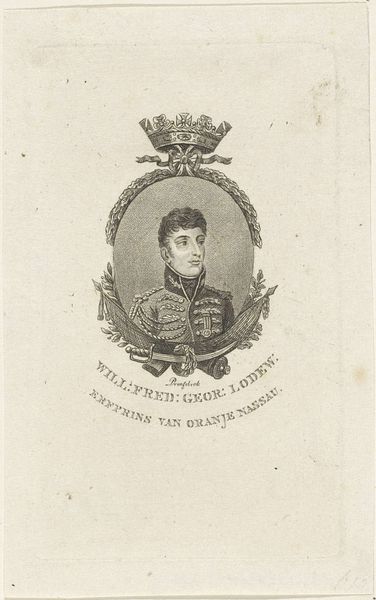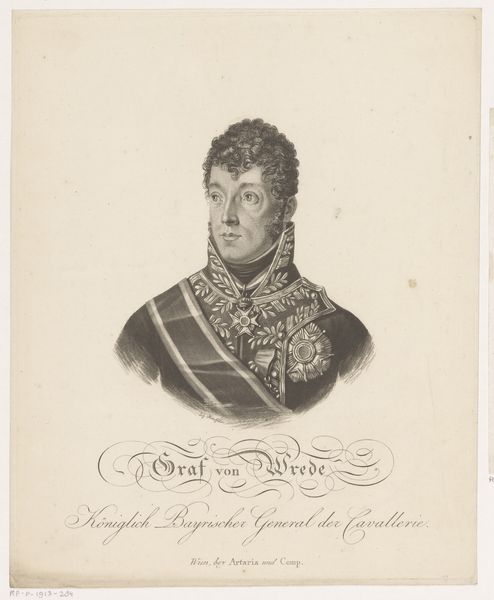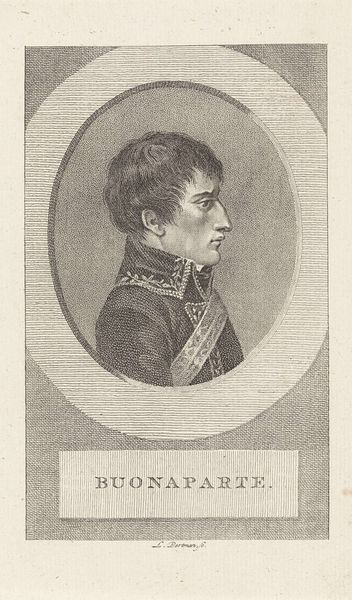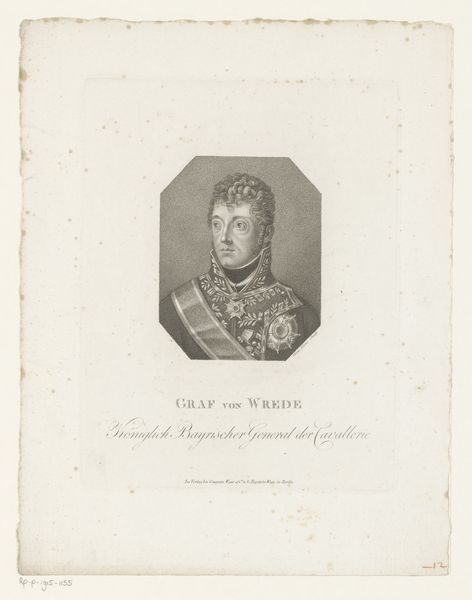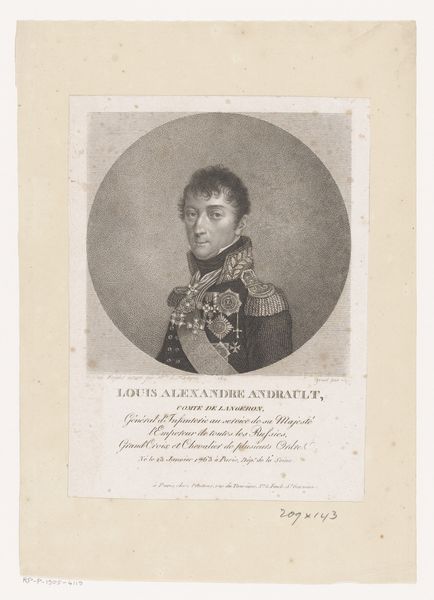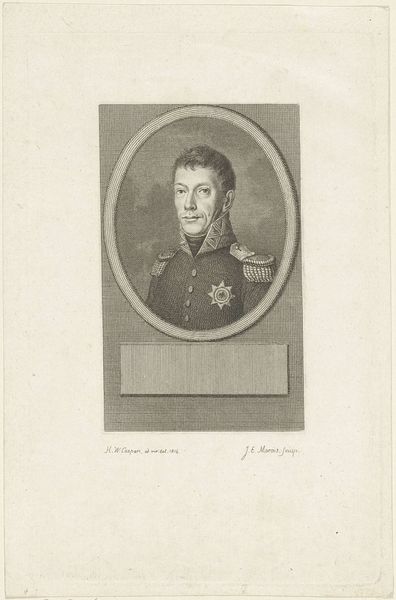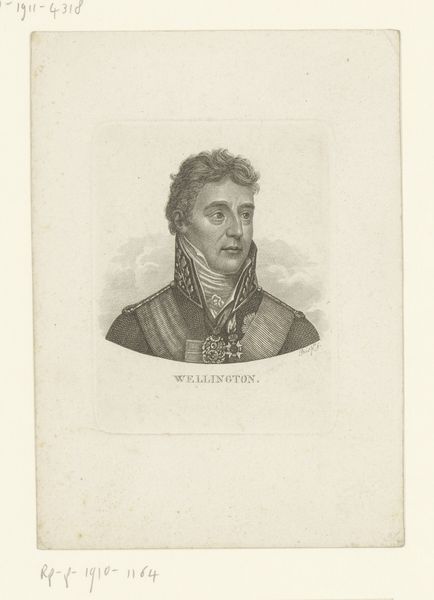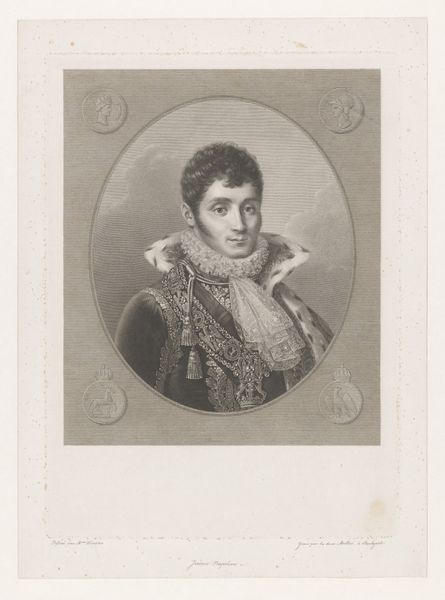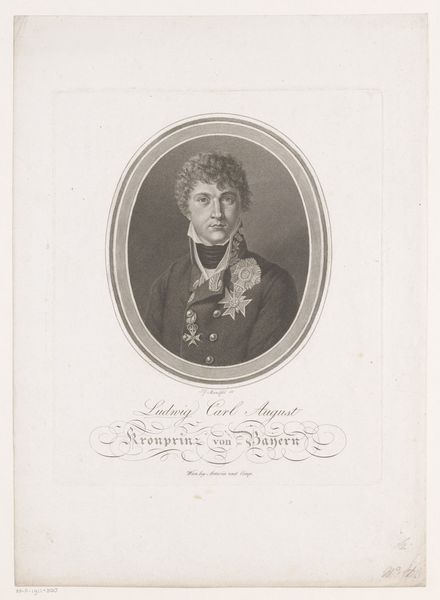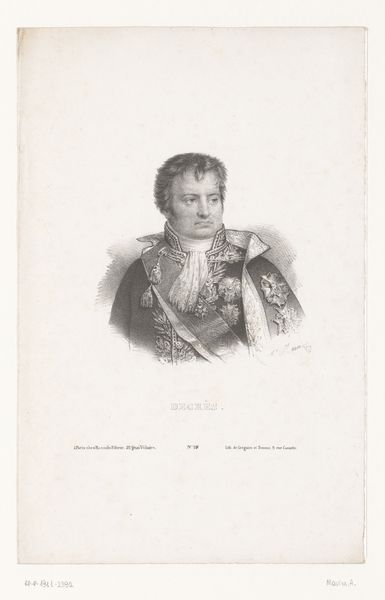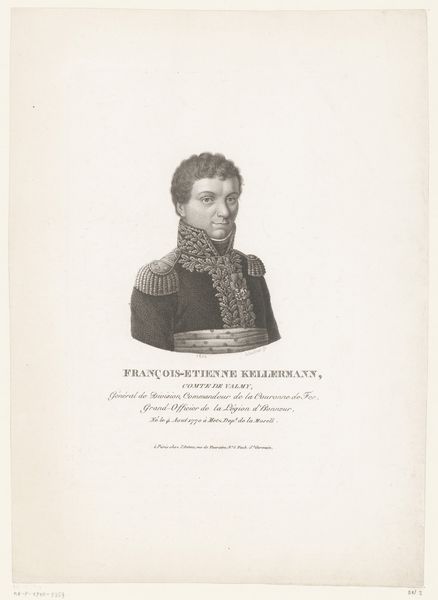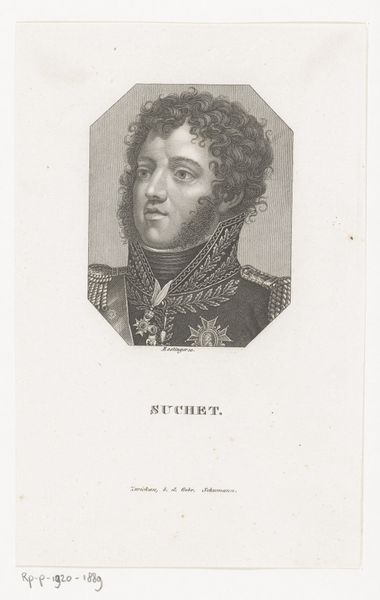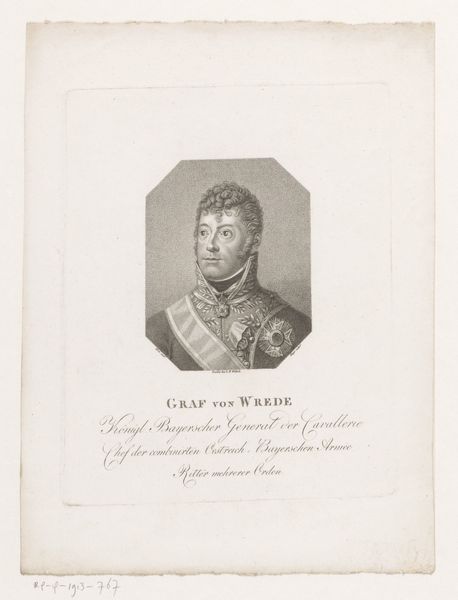
drawing, print, pencil
#
portrait
#
pencil drawn
#
drawing
# print
#
figuration
#
pencil drawing
#
pencil
#
history-painting
Dimensions: height 234 mm, width 148 mm
Copyright: Rijks Museum: Open Domain
Curator: Immediately, I see an almost unsettling formality...a tight little world contained in that oval. Editor: And here we have a printed drawing currently held at the Rijksmuseum. The artwork is titled “Portret van Jerome Bonaparte (koning van Westfalen)" which translates to Portrait of Jerome Bonaparte, King of Westphalia. This piece dates back to sometime between 1783 and 1851. Curator: It’s that buttoned-up feeling, all those medals and adornments trying so hard to broadcast power. It makes him look… trapped, somehow. A bit sad, if you look past the obvious pomp. Editor: Well, he *was* King of Westphalia thanks to his brother Napoleon, which comes with certain pressures, certain expectations tied to imperial ambition. These portraits are powerful assertions of control. Look at how his image is being presented. Curator: I see what you mean, absolutely. But, isn’t there always a tension there? I mean, aren’t portraits always performance *and* revelation at the same time? It is also really lovely to see a portrait using print as a material to make the work. The soft greys make him seem more like an angel. Editor: Interesting point. Let's remember Jerome's positionality and role as brother to Napoleon. During the height of Napoleon's reign, the image and propaganda are powerful tools for projecting the empire. Do you agree that he might appear innocent and fragile? I think this shows the nuances of portraits since at that time they may be produced to evoke admiration for political advancement. Curator: Hmmm… fair enough. Looking at him now with *that* context in mind, I definitely see a strategic softness, a deliberate smoothing of any rough edges. Even that romantic oval shape seems calculated, right? Editor: Precisely. And what does it say about power itself if it always needs to be so meticulously *pictured*? Curator: Right, right. Maybe this supposed 'fragility' is actually the scariest power of all. Well, you've ruined the 'sad boy' narrative I had running in my head! But now it has a very new feeling and maybe even it shows his power to us by means of beauty...I really appreciate how much richer you’ve made me understand this portrait! Editor: And likewise, you pushed me to reconsider the work from an emotional standpoint, which reminds me that we need to continuously be reminded of humanity regardless of portrait subject or imperialist motivation.
Comments
No comments
Be the first to comment and join the conversation on the ultimate creative platform.
